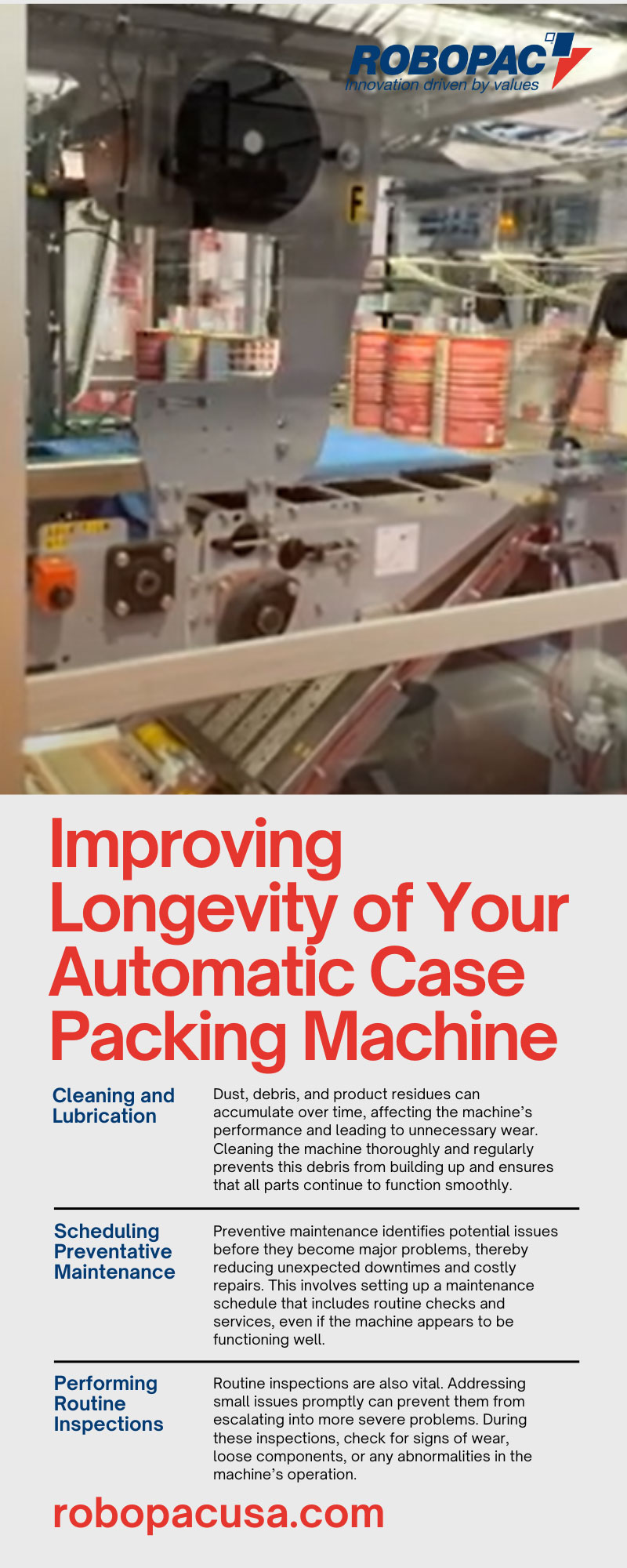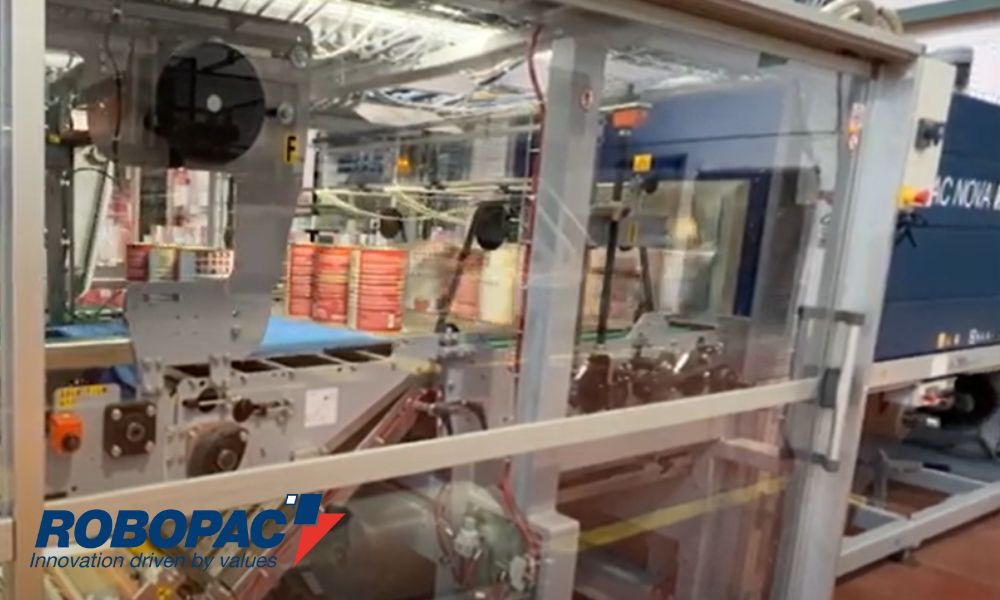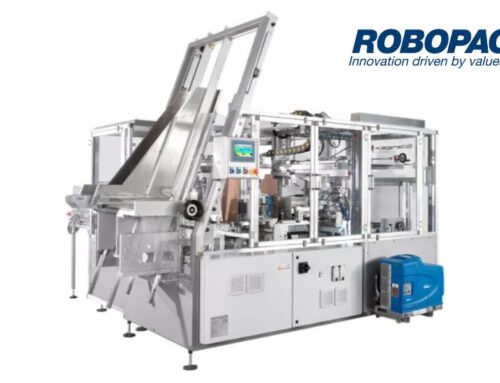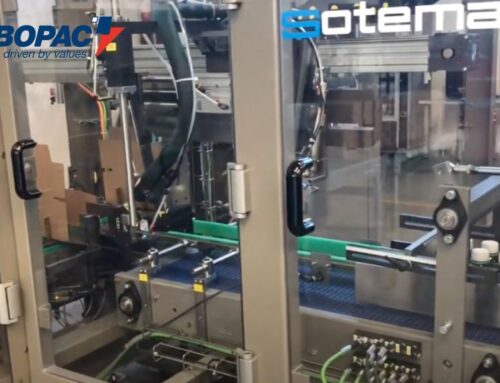Automatic case packing machines play a pivotal role in the operations of numerous industries, from food and beverage to pharmaceuticals and consumer goods. These machines streamline the packaging process, ensuring efficiency, accuracy, and speed. Through case packing automation, businesses can significantly reduce labor costs, minimize human error, and meet high production demands.
When you purchase case packing equipment, you want to make sure your investment lasts. Improving the longevity of your automatic case packing machine helps you reap the benefits of faster, more consistent packaging for as long as possible. Through preventative maintenance, routine inspections, and other best practices, you can avoid costly machine downtimes and ensure your case packer continues to promote efficiency and productivity for your business.
Common Causes of Wear and Tear
Despite their robust design, automatic case packing machines aren’t immune to wear and tear. Several factors contribute to the gradual degradation of these machines. Understanding what causes premature wear and tear helps you keep better track of the condition of your case packer, making it easier to take action and keep your machine in good shape.
One primary cause of wear and tear is the continuous operation under high-stress conditions, which can lead to the mechanical parts wearing out faster. Additionally, exposure to dust, debris, and other contaminants can clog and damage internal components.
Poor maintenance practices, such as irregular cleaning and infrequent lubrication, can further accelerate wear and tear. Lastly, operating the machine in environments with extreme temperatures or humidity levels can also take a toll on its longevity.
Following Maintenance Best Practices
Like any machine, proper maintenance is the key to ensuring your automatic case packer continues to operate smoothly and efficiently over time. Preventative maintenance does a lot to keep your equipment in good shape.
Cleaning and Lubrication
Regular cleaning and lubrication is the first step to keeping up with maintenance best practices. Dust, debris, and product residues can accumulate over time, affecting the machine’s performance and leading to unnecessary wear. Cleaning the machine thoroughly and regularly prevents this debris from building up and ensures that all parts continue to function smoothly.
Lubrication is equally important, as it reduces friction between moving parts and prevents excessive wear and tear. Always use the right products when cleaning and lubricating your equipment to make sure you don’t cause damage with incompatible cleaning solutions or lubricants.
Scheduling Preventative Maintenance
Preventive maintenance identifies potential issues before they become major problems, thereby reducing unexpected downtimes and costly repairs. This involves setting up a maintenance schedule that includes routine checks and services, even if the machine appears to be functioning well.
Performing Routine Inspections
Routine inspections are also vital. Addressing small issues promptly can prevent them from escalating into more severe problems. During these inspections, check for signs of wear, loose components, or any abnormalities in the machine’s operation.
Make sure to keep a record of these inspections, noting any findings and actions taken. This documentation can track the machine’s condition over time and inform future maintenance decisions.
Upgrades and Replacements
Even with the best maintenance practices, there will come a time when certain parts of your machine need upgrading or replacing. Knowing when to make these upgrades or replacements is key to maintaining the efficiency of your machine.
Look for signs such as decreased performance, frequent breakdowns, or parts that have exceeded their recommended lifespan. Upgrading outdated components with newer, more efficient ones can significantly enhance your case packer’s performance and extend its operational life.
Replacements are equally important. When a part is beyond repair, replacing it promptly ensures that the machine continues to operate efficiently. Delaying replacements can lead to more significant issues, affecting the overall productivity and reliability of your packaging operations.
Environmental Factors
The environment in which your automatic case packing machine operates can also have a significant impact on its longevity. Different operating environments require specific adjustments to ensure the machine functions optimally. Regularly monitoring and adjusting the machine’s settings to match the environmental conditions can prevent unnecessary wear and tear.
For instance, if your machine operates in a dusty or humid environment, you may need to take additional measures, such as installing air filters or dehumidifiers, to protect the machine’s internal components from damage. In environments with extreme temperatures, invest in adequate HVAC systems to maintain a stable operating temperature. Failure to do so can lead to overheating or freezing, both of which can severely damage the machine’s components.
Verifying Material Consistency
Another critical factor in improving the longevity of your automatic case packing machine is verifying the consistency of the materials you use. Inconsistent or poor-quality materials can cause jams and other issues that lead to machine downtime, broken parts, and unnecessary wear and tear. Regularly test your case materials, such as boxes and trays, to ensure they can move through your case packer without damaging the products or the machine.
When materials move smoothly through your case packing machine, it reduces the strain on the equipment, minimizes the risk of malfunctions, and prevents material or product waste. Establishing a routine inspection process for incoming materials can help you identify any inconsistencies before they reach the machine. Working closely with your suppliers to maintain high quality standards can also prevent material-related problems.
Pay Attention to Vibrations
Automatic case packing machines have numerous moving parts, and excessive vibrations can significantly impact their efficiency and lifespan. Excessive movement can cause components to become loose or break, leading to more significant issues down the road. If you notice any unusual vibrations or hear noises coming from the machine, you must address them promptly.
Regularly inspect the machine’s internal mechanisms for any loose or broken parts. Securing the machine can also minimize vibrations. Additionally, performing routine maintenance checks and lubricating moving parts can reduce friction and wear, keeping the machine running smoothly.
Proper Training for Machine Operators
Taking care of your case packing equipment is not a one-person job. By properly training your workforce on machine usage and maintenance, you create a culture of accountability that prolongs the life and efficacy of your equipment.
Proper training goes beyond just teaching employees how to turn the machine on and off. Operators should be well-versed in every aspect of the machine’s operation, from loading cases to troubleshooting minor issues.
Training should also include identifying and understanding malfunctions and other issues that may arise. When operators know what to look for, they can catch potential problems early and prevent minor issues from turning into major repairs. Regular training sessions and refresher courses will keep operators up-to-date with any new features or updates to the machine, ensuring they use it correctly and efficiently.
Invest in Case Packers From Robopac USA
Whether you’re implementing new secondary packaging solutions or maintaining your current workflow, Robopac USA is here to help you make the most of your machines. Explore our range of case packer equipment and reap the benefits of a fast, productive, and successful workflow when you visit us today.








